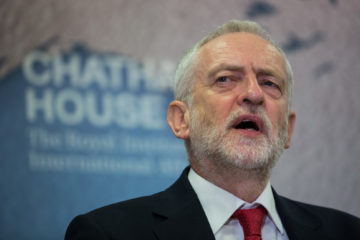Today the Bank of England (BoE) voted 7-2 in favour of raising interest rates from 0.25% to 0.5%, the first rise in interest rates in a decade. But rather than a renormalisation of monetary policy, this rate hike represents a BoE struggling to keep up with the lingering weakness of the British economy, compounded by uncertainty surrounding Brexit.
It might appear as though today’s rate hike was a perfectly routine decision. The inflation rate reached a five-year high of 3.0% in September (CPI) and the unemployment rate is at 4.3%, the lowest it has been since 1975. However, a further look into the case to raise rates reveals the puzzling position the UK economy currently finds itself in.
The basic logic of monetary policy is that there is a trade-off between inflation and unemployment. Specifically, there is a ‘natural rate of unemployment’: the lowest level unemployment can be at that is consistent with stable inflation. But a vital part of this story is missing in the UK economy at present: real wage growth. Theory says that the reason inflation will begin to accelerate at some level of unemployment is that scarcity of labour leads to firms bidding up wages. Since labour is a large component of production costs for firms, some of the wage increases will translate to higher consumer prices. Wage growth, not adjusting for inflation, has averaged a modest 2% over the past year, so real wages have actually been falling since the start of 2017. The difference between the rate of unemployment and the natural rate is the ‘slack’ in the economy. Raising interest rates signalled that there is no slack left in the UK economy, so rather than a sign of strength, the interest rate hike, as Duncan Weldon pointed out, was an expression of resignation.
Wage growth, not adjusting for inflation, has averaged a modest 2% over the past year, so real wages have actually been falling since the start of 2017. The difference between the rate of unemployment and the natural rate is the ‘slack’ in the economy. Raising interest rates signalled that there is no slack left in the UK economy, so rather than a sign of strength, the interest rate hike, as Duncan Weldon pointed out, was an expression of resignation.
So how can we explain this apparent contradiction? A nihilistic response would be to criticise the notion of a natural rate of unemployment. While the natural rate has been a centrepiece of macroeconomic policymaking since the 1970s, we cannot actually observe it. Before the 2008 financial crisis, economists had widely thought the natural rate to be around 5%, and the Office for National Statistics has even recently suggested that Brexit-related uncertainty might raise the natural rate. Yet at 4.3% unemployment, any upward pressure on real wages remains absent. And even if we are at capacity, as this view suggests, Phillip Hammond is continuing fiscal tightening, implying that monetary policy should stay put if aggregate demand is to be maintained at current levels.
Another response is to say that there is no contradiction and that there is simply a significant amount of slack left. Oxford macroeconomist Simon Wren-Lewis argues that high inflation is simply a result of a weaker pound after the Brexit devaluation. But if unemployment is as low as it is, with interest rates near their lower bound, does the central bank still have the ability to control inflation?
This brings us to the crux of the UK economy’s malaise: low productivity growth and low investment. Low productivity is a problem in many developed economies, such that Harvard economist Larry Summers argues we are experiencing ‘secular stagnation’: a fall in growth irrespective of anything to do with the business cycle. It is not clear what the solution to this is but the UKs response of both fiscal and monetary tightening is almost certainly not the correct response.
The spectre of Brexit
Low investment, while also in other countries, is being seriously exacerbated by the possibility of a hard Brexit. Questions loom over the future of the UK as a trading partner for Europe and whether London will continue to be the financial capital of the EU. Goldman Sachs has begun to tentatively expand their operations in Frankfurt, revealing what they think about the UKs possibilities post-Brexit.
So why did the BoE raise interest rates today? Some component of the reason is that they have been hinting at it since early September. The credibility of the central bank hinges on monetary policy being predictable and well understood.

But beyond that, the decision seems bewildering no matter what you believe about the excess capacity or lack thereof in the economy. The BoE cut rates to a historic low of 0.25% in August 2016 as a response to predicted Brexit uncertainty. While the BoE did overestimate the immediate economic effects of the Brexit vote, the vote has clearly discouraged investment, as the OECD points out. So why renege on that decision?
Perhaps the central bank is experiencing political pressure. Jacob Rees-Mogg just recently asserted that Mark Carney is an ‘enemy of Brexit’, the idea being that Carney’s lack of confidence in Brexit and attempts to mitigate any economic consequences are a cause rather than a result of the dismal Brexit negotiating process.
What is clear in any case is that the Bank of England seems aimless. After cutting rates to try to mitigate a downturn just several months ago, it is now raising rates despite the general sclerosis of the UK economy. The fact that this rate hike was widely predicted, yet hard to justify, shows that the BoE is struggling to adjust to the new world of low investment, low growth, and high uncertainty over the future of the UK economy.


